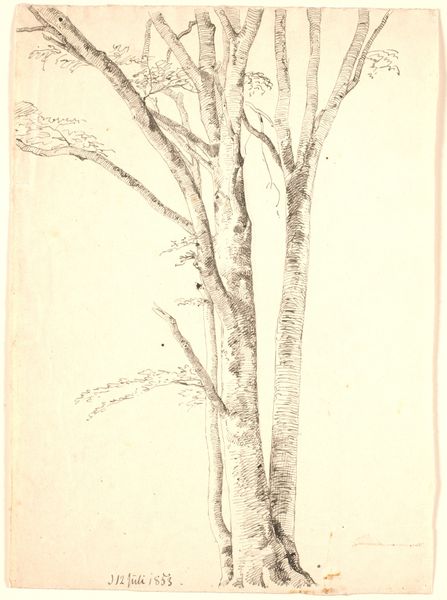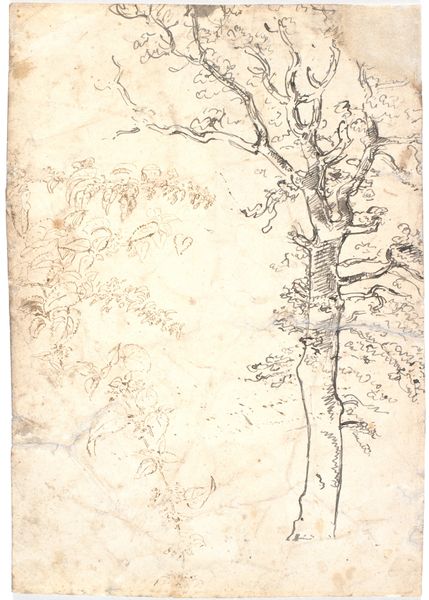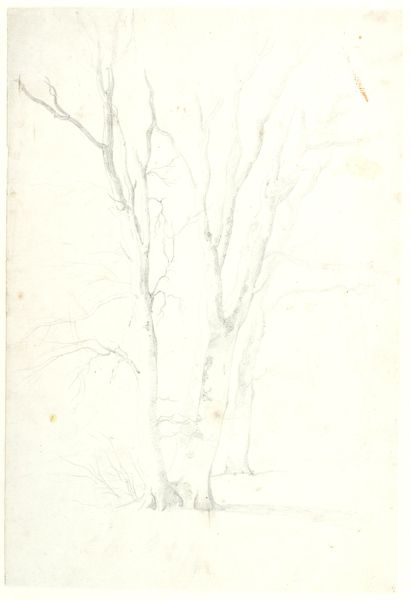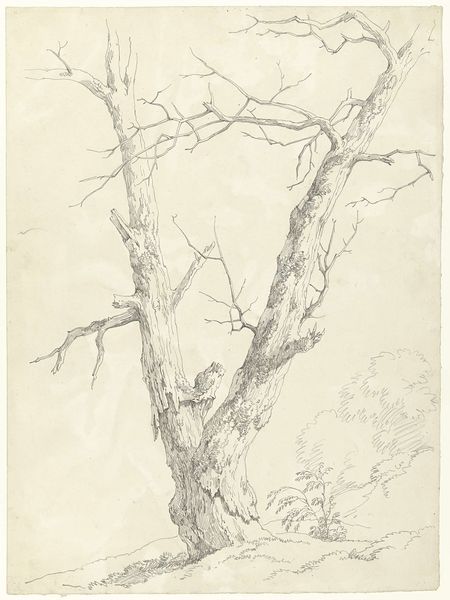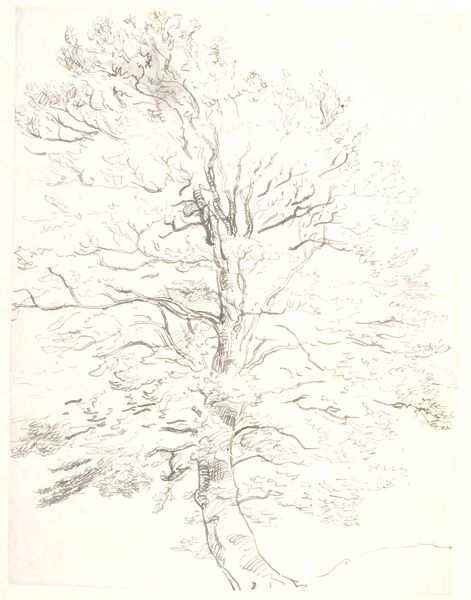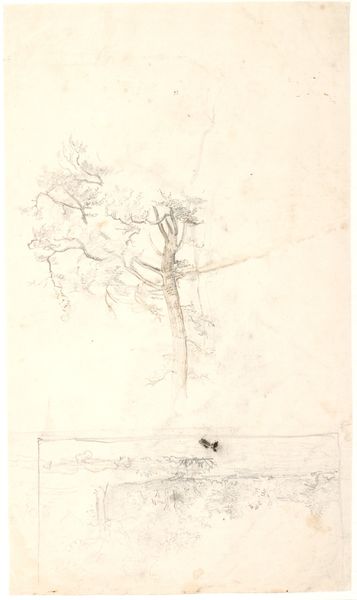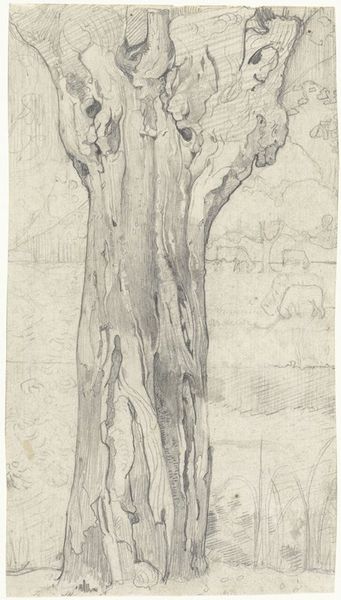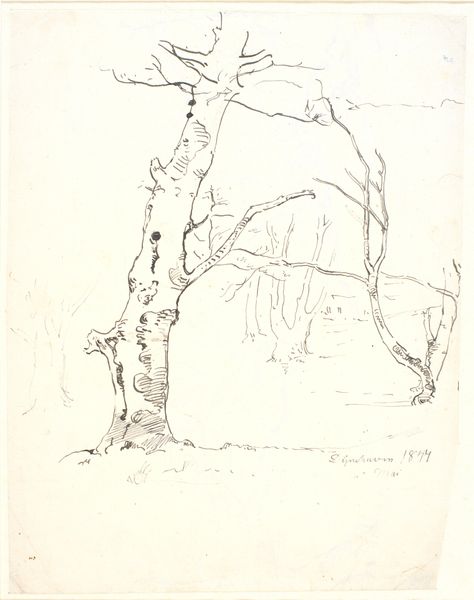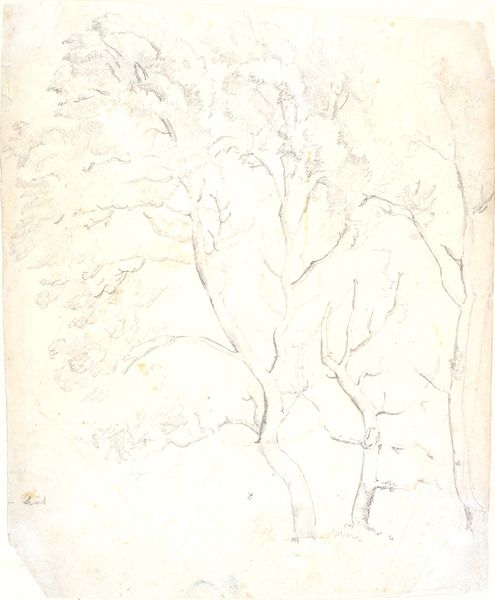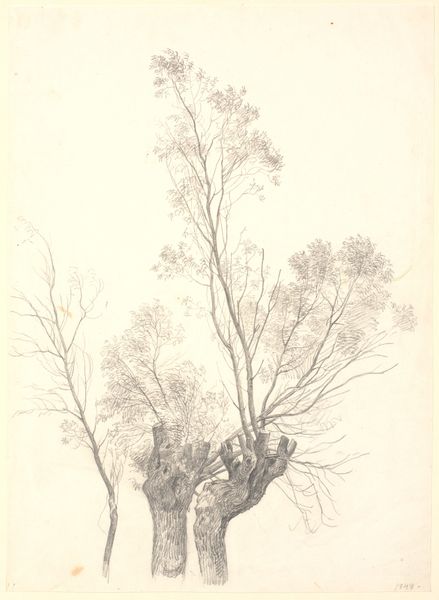
drawing, ink
#
drawing
#
landscape
#
form
#
ink
#
romanticism
#
line
#
realism
Dimensions: 314 mm (height) x 207 mm (width) (bladmaal)
Editor: This ink drawing, "En bøgestamme," or "A Beech Trunk," created by Dankvart Dreyer between 1844 and 1846, captures such detail. The way he rendered the textures, you can practically feel the roughness of the bark. What do you make of the stark lines? Curator: The emphasis here lies significantly in the treatment of form and line. Dreyer isolates the tree, presenting it as a study in shape and texture. Observe how the density of lines varies to create depth and shadow. The drawing style employs a linear approach, yet succeeds in rendering the mass and volume of the trunk with remarkable precision. How do you view his composition? Editor: I noticed how he uses such a limited palette and creates so much depth, though. It's pretty captivating! Is there anything symbolic at play here? Curator: Symbolism might be tempting, given the period. But from a Formalist point of view, what is vital is how Dreyer creates an intimate portrayal through close observation of its materiality. The branching network, the surface details, all underscore a preoccupation with the object itself, independent of external meanings. Dreyer gives us visual information. What significance do you observe within the artwork? Editor: So, rather than looking for deeper meanings, we are supposed to simply observe its form, line, and textures. I see a realism in this. I am intrigued with his emphasis on realism and the romantic style to give the trunk life. Curator: Precisely! By isolating the beech trunk and detailing its textures with ink, Dreyer showcases the artistic merit inherent in form and line. Through that framework, we learn a great deal about what constitutes landscape as a function of nature's structural elements. It really makes one pause and appreciate the structure that makes that beech tree come alive. Editor: Absolutely, and by thinking about composition, Dreyer directs our gaze, our consciousness towards form, nature and structure. Thanks for clarifying that.
Comments
No comments
Be the first to comment and join the conversation on the ultimate creative platform.
